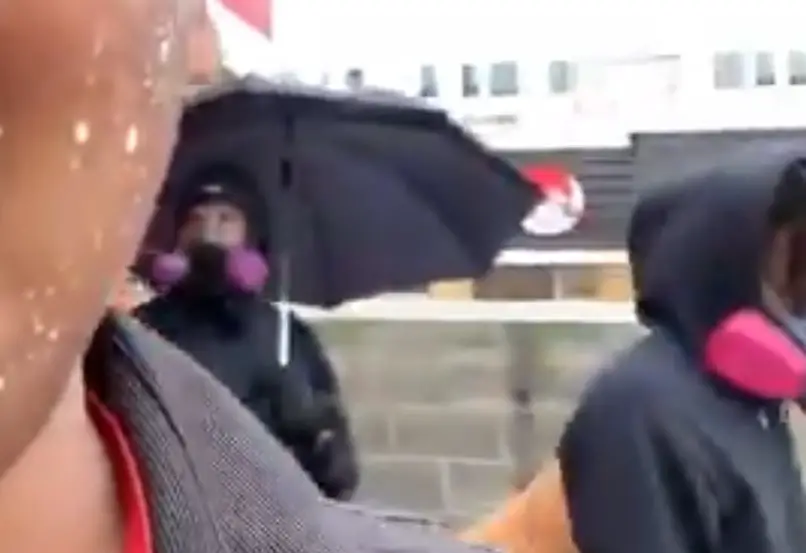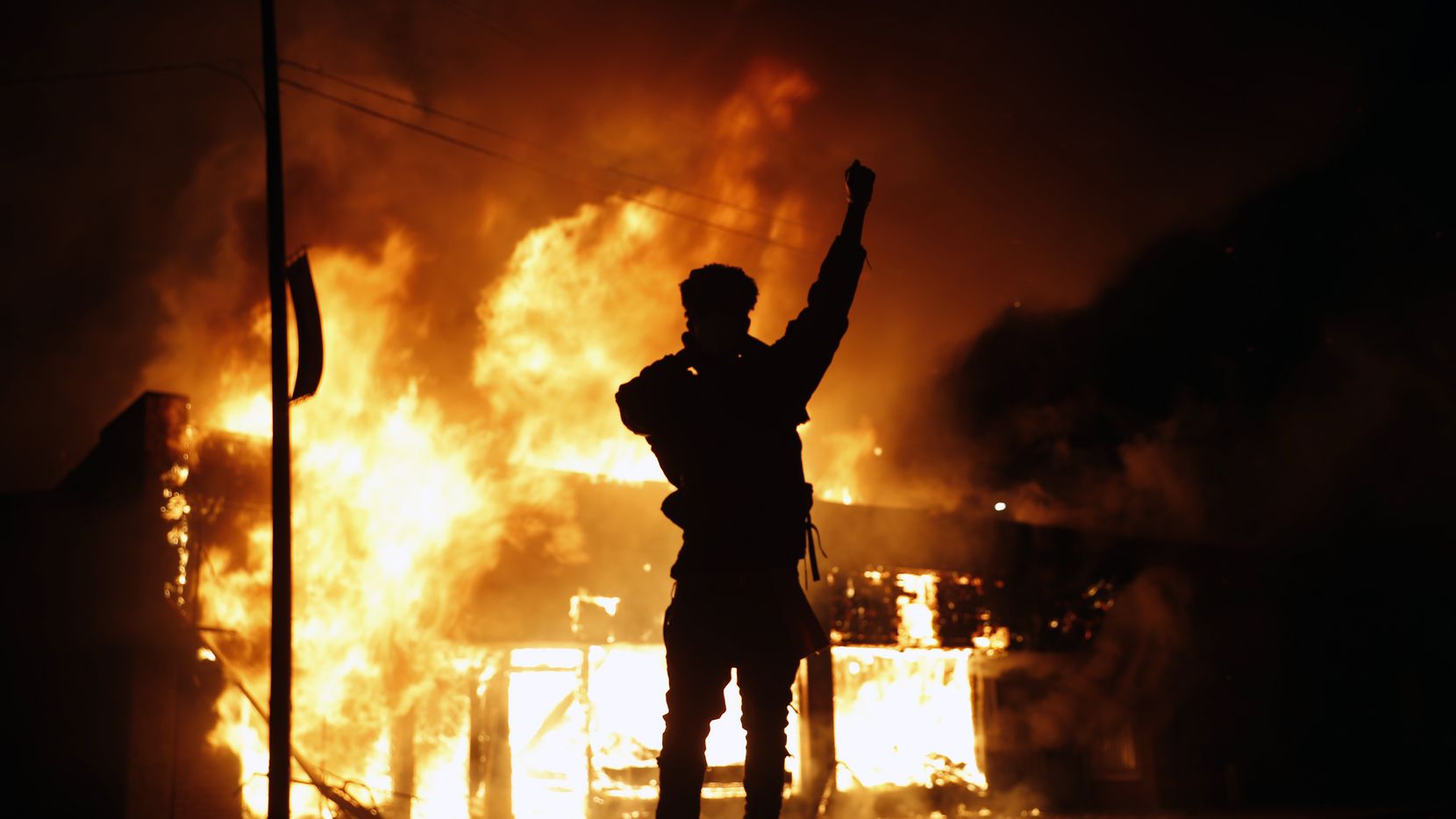There’s a great line in the 1997 movie, Men in Black: Will Smith and Tommy Lee Jones are members of a secret agency that deals with extraterrestrial aliens who are already here, unbeknownst to the rest of us. And there’s an alien battle cruiser on its way to destroy earth. Smith says they should warn people. He says, “Why the big secret? People are smart, they can handle it.” Jones replies, “A PERSON is smart. PEOPLE are dumb, panicky, dangerous animals. You know it.”
We see it all the time. Even on this site. If two people address a topic, one-on-one, there can be an intelligent dialectic. But if someone starts an irrational rant, a horde of extremists mysteriously descend, like locusts, and they cannot be reasoned with. They don’t listen, except to other ranters. And then, normally rational writers get swept up in it and praise the craziness–because it’s what they wish were true.
The Covid-19 lockdown has bottled up a lot of boredom and frustration. Individuals may know that countries around the world have taken steps, such as “safe at home” to reduce the lethal effect of the disease. Then, you have Brazil, which has become the second-largest epicenter of the pandemic, growing wildly, because their leader, Jair Bolsonaro, refuses to see reason. While Trump and Bolsonaro agree on most things, Fox Business notes that Trump finally banned travel with Brazil, last Tuesday.
Individuals know health officials are trying to keep us safe. They know that being responsible is not only good for them, and others; but it also takes the heat off health-care workers, who have been so overworked and endangered by many of us, who have carelessly infected themselves and others.
Yes, individuals know that, but “dumb, panicky, dangerous animals” want someone to blame, someone to punish, for their own discomfort.
The first manifestation of this outburst was the gang protests against the lockdown, itself.
Frustrated people, some with Nazi and Confederate insignias, gathered too close together, many without masks, just asking the virus to leap from one to another to another. The worst example of this was in Michigan, where militants went to the Capitol to threaten Gov. Gretchen Whitmer with weapons, even an ax. Some actually went to her personal residence. It was a threat heard ’round the world, such as in Britain’s Guardian.
Some individuals genuinely felt that they were losing too much to the shutdown, and were willing to take a personal risk (albeit, endangering others). They felt that peaceful protest was needed. They were not to blame for the extremists who joined in—funded and directed by local and national alt-right groups.
The threats and violence will not be limited to protests of the lockdowns, directly.
People are upset. Here’s a bit of psychology: Someone studied why couples fight. [Editor’s note: Sorry. We have not been able to locate the study link.] They found that a fight has a physiological effect. While the catalyst may have been a reasonable disagreement, it’s not just an intellectual exercise. The whole body becomes upset, most notably, that churning in the stomach. If the couple is able to resolve the intellectual disagreement, the fight often does not end. The physiological discomfort continues, so the person thinks there must be other wrongs to be righted. And so, they begin to fight about an entirely different issue—“yeah, but,” and “what about.”
So now, other “wrongs” are leading to responses far in excess of a reasonable reaction.
The second violent reaction to Covid-19 has been the response to the relatively small number of poorly trained police officers, who use excessive force against suspects they are trying to restrain. Likely, the act is the result of a long interaction with an individual, leading to an action the officer didn’t intend, and probably regrets.
It’s understandable for people to want to object to something like the death of George Floyd. Even Donald Trump expressed remorse. . . Before getting himself in trouble over it.
George Floyd is the Minnesota man who died after a police officer knelt on his neck for many minutes. The officer has been charged with murder and manslaughter.
A YouGov poll notes that an amazing 78% of the public feel that it was right to arrest the officer–including 68% of Republicans–with only 6% disagreeing. Also, the largest-ever petition by Change.org collected 5.7 million signers in the first few days, demanding justice.
The Congressional Hispanic Caucus says the incident is just a symptom of a greater problem. “Racial disparity exists in every aspect of American society from wealth and health to employment and housing to the ability to watch birds in the park or go for a run in the neighborhood,” but said violent protesting is “unacceptable.”
Understandably, people, both Black and White, protested, and not just locally. However, the bottled-up frustration from the lockdown led to an excessive response.
Instead of just holding signs and chanting, violence ensued. Some “dumb, panicky, dangerous animals” overdid it, egged on by their peers to act more and more irrationally.
But there’s another effect at work: opportunists—users—who exploit another person’s emotions to achieve something entirely different from what the protestors want. This takes two forms: political and personal. Groups such as Antifa (“Anti-Fascists”) took the opportunity to rail against the police and the “establishment.”
Outside extremists are clearly involved—leftists who want to make the protests more memorable—and rightists, who want to discredit the peaceful protests and take attention away from the real issue.
It’s important to note that officials complain that the fires and damage were not caused by Minnesotans, but rather, outside agitators.
“Minnesota Gov. Tim Walz said rough estimates indicate that about 20% of protesters are Minnesotans and about 80% are from outside the region.”
In fact, St. Paul Mayor Melvin Carter “said Saturday that all of the protesters who were arrested in his city the previous night were from out of state as demonstrations in and around Minneapolis over George Floyd’s death descended into violence.”
There are other curiosities. In one case, an “Umbrella Man” is seen smashing windows with an umbrella, wearing heavy clothing in the sweltering heat—and a gas mask. When legitimate protestors approached him to tell him to stop, asking if he was a cop, he walked away without responding. The State’s Attorney General Keith Ellison called him a “provocateur,” suggesting that he was from outside the state, either rightwing (eg, White Supremacist) or leftwing (eg, Antifa), to whip up hysteria. He opened the umbrella, even though it was not raining. Some think he was signaling to other outsiders, to direct the damage, or to identify bad actors.
Another character is “Pink Pizza Shirt Guy.” This site has a play-by-play with video of both Umbrella Man and Pink Pizza Shirt Guy, and speculation that one or both are undercover cops, perhaps surveying the crowd, but clearly, instigating violence. Suspiciously, the two men stayed very close to the local police station.

A second kind of opportunist is the individual who sees the disruption and chaos as an opportunity for personal gain. “While police are busy trying to quell unrest, why not break in and get that big-screen TV you’ve always wanted?” These people are not there to protest. They just see a chance for personal gain at the expense of others. And, of course, those who want to destroy the establishment went there to burn it down.
Unfortunately, the problem is that the public, at large, may not be able to discern the difference between the genuine protestors, with legitimate complaints and sincere beliefs—from the radical or reactionary political users—and the selfish individuals who want to cash in. And so, the entire event is tainted by the image of violence, and the result may be that the public turns against the original theme, because of outside bad actors who joined in.
For our site, the question is what this, particular, furor will do to the presidential election. For those of us old enough to remember the 1960s, the answer seems obvious. As much as the gang effect can cause violence, the flip side of that coin is the gang effect of fear. In the 1960s, that fear caused a “Silent Majority” of people to turn to the “law and order” candidate—Richard Nixon. Likewise, after the attacks on 9/11, George Bush’s support became almost unanimous. We wanted someone tough to punish the perpetrators. Anger is contagious—but so is fear or desire for retribution. If these riots last for more than a few days, they will probably reassure victory for Donald Trump.
However, the main point of this article is to warn that this is probably only the beginning of mass violence of unforeseen kind. There will be more threats of violence against our leaders, for trying to keep us safe. There will also be other powder-keg issues and events that will explode into violence. It will be an unavoidable, unintended effect of the lockdown. And the problem is that, while “A PERSON is smart. PEOPLE are dumb, panicky, dangerous animals. You know it.”
Donate Now to Support Election Central
- Help defend independent journalism
- Directly support this website and our efforts
